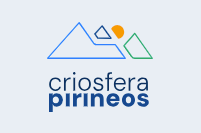LIFE MIDMACC: Recovery of pastures affected by scrubland phenomena, through clearing and the introduction of extensive livestock farming.
Description of the case study
LIFE MIDMACC is a project whose main objective is to promote adaptation to climate change through the implementation and testing of different landscape management alternatives in rural mid-mountain areas, while promoting sustainable socio-economic development through extensive livestock farming.
The project has developed and implemented 3 specific adaptation actions in 3 strategic areas in the south of the Pyrenees, north of the Iberian Peninsula, through innovative landscape management techniques.
Recovery of pastures affected by the phenomenon of scrubland, through clearing and the introduction of extensive livestock farming:
For the recovery of pastures, actions have been carried out in three representative areas of the Mediterranean mid-mountains in La Rioja (San Román de Cameros and Ajamil de Cameros) and in Aragon (La Garcipollera).
The actions implemented consisted of the mechanical clearing of scrubland in representative areas, the introduction of sheep, and the installation of monitoring and control in plots, with the aim of evaluating the recovery of pastures as an adaptation measure in the face of climate change.
Specifically, the effect of different sheep stocking rates on pasture production and quality has been evaluated through the analysis of plant species richness and composition, as well as nutritional quality, biomass productivity and pastoral value.
Mountain areas in southern Europe are highly sensitive to climate change. In Mediterranean mid-mountain areas, available water resources have progressively decreased in recent decades due to climate change. In particular, longer and more severe droughts, coupled with more frequent and more intense heat waves, are increasing the vulnerability of these areas to forest fires and the phenomenon of deforestation. In addition, the progressive abandonment of traditional land uses due to the lack of generational replacement, and the low profitability and social attractiveness, is causing a generalised loss of mosaic landscapes, which are more resilient to climatic extremes.
The objective is to find the livestock management strategy that maximises the positive effects on the ecosystem in balance with livestock production, while ensuring the continuity of resources.
At the landscape level, this adaptation strategy has been shown to bring substantial improvements in maintaining the mosaic landscape of the treated areas, with a considerable increase in habitat diversity, and in the moisture and quality of the grazing resource, demonstrate substantial improvements in resilience to climate change through a greater provision of water resources, which at basin level could reach up to +12%, if these actions were applied to the whole of the hydrographic basin studied, as well as reducing the risk of fire and, of course, the risk of drought.
At plot scale, the treatments employed have been shown to considerably improve soil quality through significant increases in soil organic carbon and nitrogen content. Increases in surface runoff have also been observed in pastures without increasing erosion rates (blue water).
On the other hand, the treated pastures have also experienced an increase in the cover of herbaceous species compared to the adjacent areas without livestock grazing.
Case mainly developed and implemented as a measure to adapt to climate change in the Pyrenean mid-mountains in synergy with the maintenance and increase in value of the extensive livestock sector.
CITA, IPE-CSIC, University of La Rioja, University of Zaragoza, and extensive livestock farms.
Additional Information
This pilot action has been made possible thanks to the collaboration of the livestock farmers of San Román de Cameros and Ajamil de Cameros (Rioja), as well as CITA and its experimental station in Garcipollera (Aragón), which manages pastures and has sheep farming.
Success: proximity of the land to livestock farms, geographical location and slope.
Constraints: clearing costs, dependence on European aid.
With regard to the socio-economic analyses linked to the MIDMACC grassland management strategies, the analyses show variable costs for land clearing activities that can depend considerably on the characteristics of the terrain and the state of the scrub treated.
The results of this analysis underline the difficulties currently faced by extensive livestock farmers in making their farms economically viable due to the additional cost of implementing the clearance, the application of which is therefore closely dependent on European subsidies.
The demonstrated environmental benefits undoubtedly achieve greater resilience to climate change of the treated areas and also of the farms due to improvements in soil quality, maintenance of the mosaic landscape, maintenance of grazing resources, and greater resilience to extreme climatic events such as droughts and fire risk.
See MIDMACC deliverable no. 21 for more information.
The LIFE MIDMACC project has been developed within the framework of the LIFE Adaptation to Climate Change programme, in the 2018 call for proposals.
2019-2024
Reference information
PYRENEAN CLIMATE CHANGE OBSERVATORY
Avenida Nuestra Señora de la Victoria, 8
22.700 - Jaca
Huesca - España
+34 974 36 31 00
info_opcc@ctp.org




